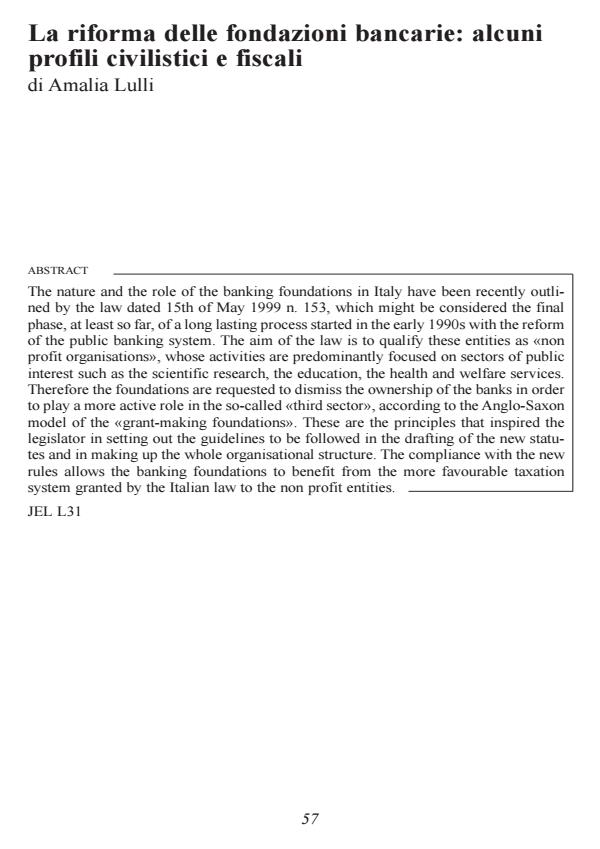La riforma delle fondazioni bancarie: alcuni profili civilistici e fiscali
Journal title ECONOMIA PUBBLICA
Author/s Amalia Lulli
Publishing Year 1 Issue 2000/2
Language Italian Pages 14 P. File size 34 KB
DOI
DOI is like a bar code for intellectual property: to have more infomation
click here
Below, you can see the article first page
If you want to buy this article in PDF format, you can do it, following the instructions to buy download credits

FrancoAngeli is member of Publishers International Linking Association, Inc (PILA), a not-for-profit association which run the CrossRef service enabling links to and from online scholarly content.
The nature and the role of the banking foundations in Italy have been recently outlined by the law dated 15th of May 1999 n. 153, which might be considered the final phase, at least so far, of a long lasting process started in the early 1990s with the reform of the public banking system. The aim of the law is to qualify these entities as "non profit organisations", whose activities are predominantly focused on sectors of public interest such as the scientific research, the education, the health and welfare services.Therefore the foundations are requested to dismiss the ownership of the banks in order to play a more active role in the socalled "third sector", according to the Anglo-Saxon model of the "grant-making foundations". These are the principles that inspired the legislator in setting out the guidelines to be followed in the drafting of the new statutes and in making up the whole organisational structure. The compliance with the new rules allows the banking foundations to benefit from the more favourable taxation system granted by the Italian law to the non profit entities.
Amalia Lulli, La riforma delle fondazioni bancarie: alcuni profili civilistici e fiscali in "ECONOMIA PUBBLICA " 2/2000, pp , DOI: